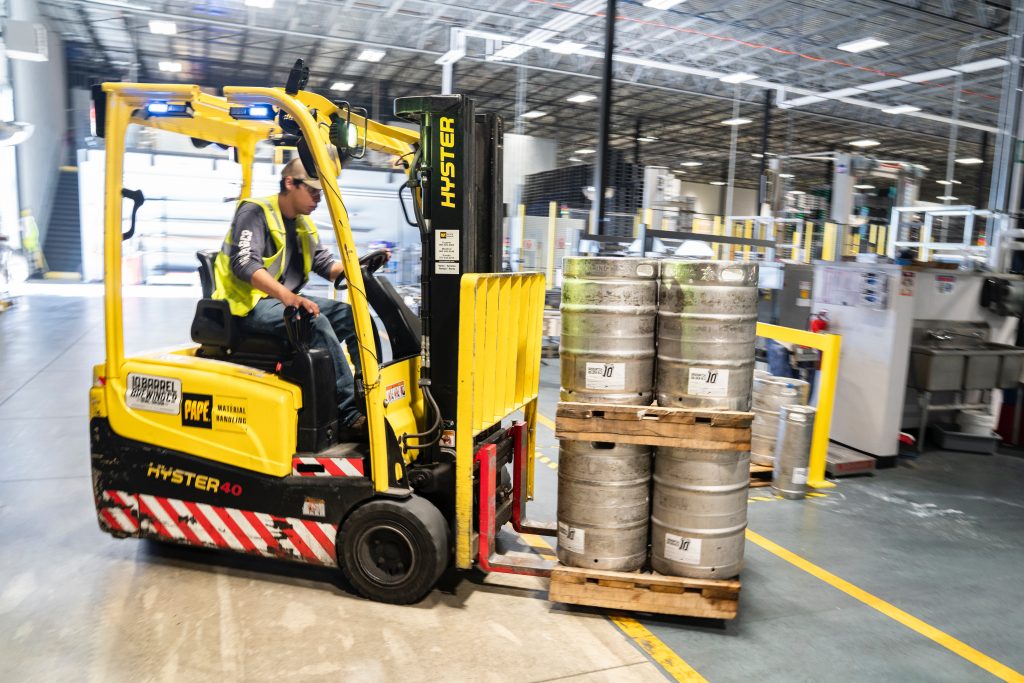
Are you considering whether your organization needs an occupational health and safety (OHS) management system? If so, you’ll likely know that there are many different options available to you. In this article, we’ll look at what OHS management systems are, and offer examples and key elements of various systems to help you understand more about your options.
In this article, we’ll be discussing things like:
- What is an OHS management system?
- Examples of OHS management systems
- Examples of OHS management systems for small businesses
- Examples of OHS management systems for medium and large businesses
- Key elements of OHS management systems
- Key elements of software OHS management systems
1. What is an OHS management system?
OHS is an acronym for Occupational Health and Safety. An OHS management system is part of an organization’s management system and covers the following areas:
- The occupational health and safety organization in a company
- The health and safety policy in a company
- The planning process for accident and illness prevention
- The line management responsibilities for health and safety procedures
- The practices, resources, and procedures for developing and implementing the occupational health and safety policy
- The ongoing practices for maintaining and reviewing the health and safety policy
The system should cover an organization’s occupational health and safety organization in its entirety. This includes everything from planning OHS-related tasks, to developing strategies and procedures, as well as analysing data and keeping abreast of any changes and updates.
2. Examples of OHS management systems
OHS management systems come in all shapes and sizes and can take a variety of formats. The most common options include:
Paper-based OHS management systems
Traditional OHS management systems use handwritten or printed documents that are filed and stored. Some documents may be typed on MS Word or Excel and then printed for safekeeping. For example many small businesses create a written document called a Safety Statement. This specifies how the business will manage OHS issues and stipulates the risk assessments and control measures needed to minimize risk in the workplace.
Electronic OHS management systems
Electronic OHS management systems can be developed in-house or purchased from third-parties. They are used to store and manage files electronically and provide a user interface for staff members to find, navigate and manage the files. Many smaller organizations purchase software from a third-party while larger businesses develop their own software in-house to better develop, store and manage their OHS system.
Cloud-based OHS management system
Cloud-based OHS management systems are provided by a third party and involve storing OHS-related documents on off-site servers belonging to the provider.
Hybrid OHS management system
Many organizations use a combination of one or more of the above approaches and incorporate paper-based, online, offline, and cloud-based solutions to satisfy their OHS management needs.
3. Examples of OHS management systems for small businesses
Small businesses make up the majority of businesses in Australia and many of the challenges they face are also faced by medium and large organisations. Primarily, they are legally required to provide a safe and healthy working environment for their staff and are compelled to comply with health and safety legislation.
The majority of low-risk small businesses draw up a Safety Statement. This written document specifies how OHS will be managed by the business. It also outlines the risk assessments and control measures needed to minimize risk in the workplace.
Some small businesses, especially those in high-risk sectors, may benefit from having access to more resources that traditional safety statements provide. They may find value in buying a cloud-based OHS management system.
4. Examples of OHS management systems for medium and large businesses
Medium and large businesses have many challenges in common with small businesses in that they must provide a safe and healthy working environment for their staff and are compelled to comply with all health and safety legislation. However, they also face specific challenges, such as being spread across several sites nationwide or even internationally.
Medium-sized businesses must have a Safety Statement that outlines how OHS requirements will be managed and show how the company will comply with all relevant laws and regulations.
Large business must also have Safety Statement but face a greater financial cost of non-compliance. Dedicated OHS management software, whether developed in-house or brought in, can help streamline safety processes throughout a large organization. It can help develop consistent rules across multiple sites and ensure that processes are uniform across different locations. Most OHS management systems can help facilitate better communication between departments in large businesses.
5. Key elements of OHS management systems
Regardless of type, all OHS management systems have the following key elements:
- Policy and commitment
- Planning
- Implementation and operation
- Measuring performance
- Auditing and reviewing performance
We’ll discuss each of these five areas in greater detail.
Policy and commitment
First and foremost, OHS management systems must help organizations prepare an occupational safety and health policy program that is fit for purpose. This program must set a clear direction for the organization to follow and must demonstrate a commitment to continuous improvement. It must also meet the expectations of all stakeholders, whether they are shareholders, employees, customers or society.
Planning
The second element of an OHS management system is that it helps an organization create a plan that sets out how it will fulfil its health and safety policy. This includes any arrangements and management structures required for an organization to meet its health and safety objectives and targets.
Implementation and operation
Thirdly, OHS management software should outline how an organization plans to implement its health and safety policy and meet its objectives and targets. This includes how it will motivate employees to work safely, avoid accidents and protect their long term health. In terms of operation, the OHS management system should help an organization in the following areas:
- How to encourage staff to participate in the OHS process, via safety committees and a safety representation system.
- How staff members are empowered to make responsible and informed contributions to the health and safety program.
How assessment methods are used to eliminate risks, through the selection and design of equipment, facilities, and processes. If risks cannot be eliminated, there should be ways of minimizing risk through safe systems and physical controls.
Measuring performance
Fourthly, the OHS management system should outline how the organisation plans to measure, monitor and evaluate safety and health performance. It will state the standards against which performance will be measured and state whether active self-monitors or reactive monitoring will be used to guard against or respond to accidents, ill health, and incidents.
Auditing and reviewing performance
The fifth element of OHS management systems is to state how an organization plans to review and improve its health and safety management system. This covers legal responsibilities, reference to key performance indicators, external comparison with the performance of business competitors and best practice in the organisation’s employment sector. This helps companies report on how well they have performed on worker safety and health in their annual reports and how they have fulfilled their responsibilities with regard to preparing and implementing their Safety Statements.
6. Key elements of software OHS management systems
Software OHS management systems have the same basic elements as paper-based systems. However, they also have a number of unique elements that are not found in paper-based OHS management systems. These elements are:
- Mobile Capabilities
- Cloud-based
- Connected Processes
- User-friendly
We will outline each of these elements below and show how they relate to software OHS management systems.
Mobile Capabilities
Most software OHS management systems offer a range of mobile capabilities. They allow employees and/or contractors to access and edit safety documents and procedures via mobile devices. This works using a special app, developed especially for OHS management system.
Using the app, staff can make observations and report hazard no matter their location. This helps to engage your workforce with health and safety rules and procedures, and helps you meet your OHS goals.
Easy-to-use mobile capabilities such as apps can help employees feel part of the safety process. Mobile apps can make it easier for everyone to participate in the process and feel part of the team. This also eliminates tedious paper-based reporting and helps improve efficiency by reducing the time it takes for staff to comply with OHS procedures.
Cloud-based
Many OHS management systems are cloud-based and make it easier for organizations to manage and meet their OHS goals. Cloud-based systems make it far simpler for businesses of all sizes to share actions, tasks and compliance data throughout an entire organization. As everything is run online, employees can quickly access data on any internet-enabled device, no matter where they are. This helps managers create and assign duties, share reports and updates, from any location.
Cloud-based OHS management systems will let senior management see whether activities and duties are being completed. This helps improve regulatory compliance and improve the efficiency of data collection and reporting by putting all OHS data in a single, centralized location. Any incident logs can be quickly accessed, tracked, managed and analysed to help avoid them in the future.
Connected processes
Most software OHS management systems adopt a ‘connected processes’ approach that makes health and safety management far simpler. A connected OHS management system is one where all the processes are integrated and a change to one process is automatically saved and made available to everyone using the system. This can make your work life far simpler by greatly simplifying the OHS management processes.
For example, a connected OHS management system can offer the following tasks:
- Automatically log incident reports
- Use data to generate reports
- Conduct analysis of OHS incidents and reports
- Make suggestions about future tasks and improvements
User-friendly
The fourth key element of software OHS management systems is that they are far more user-friendly than paper-based systems. The software interface is fully customizable and offers functionality that far surpasses what can be accomplished with paper-based approaches. For example, the software interface is clear, simple and intuitive and lets employees accomplish the following tasks:
- Report incidents, injuries, hazards, and risks.
- Conduct risk assessments
- Manage accidents
- Receive automated reminders.
- Work within simple ‘open’ workflows
- Generate dashboard reports
As you can see, software OHS management systems offer a range of unique benefits that aren’t available to paper-based systems. The software helps employees understand the cause of accidents and gives them the tools to reduce the chances of a repeat accident. The software also helps organizations understand associated costs and confidently management risks.
Benefits of software OHS management systems
Software OHS management systems have many unbeatable advantages of traditional paper-based OHS systems. These include:
- Improving incident reporting rates
- Reducing risks and incidents
- Improve employee efficiency by reducing the time taken to complete paperwork
- Enhance a company’s compliance with OHS legislation
- Protect a company’s reputation by reducing risk.
- Identify and develop cost-effective strategies, thus minimizing lost time.
- Improve competitiveness by reducing time spent on staffing costs.
- Develop communication, especially with large organisations spread across several locations
Overall, software OHS management systems let businesses manage their OHS strategies across their entire organization, helping to reduce the risk of accidents and injuries while protecting themselves against non-compliance legislation.
Conclusion
With a wide variety of OHS management systems available, there’s never been a better time to consider whether your organization in on the right track. Our outline of the types and examples of OHS management systems show that many businesses would benefit from reviewing their OHS provisions on a regular basis.
If you’re still taking unnecessary risks with the safety of your staff and your reputation as an employer, don’t. Contact Beakon today and find out how our OHS management system can help protect your business. Our unique software will help your organisation achieve its goals for a safe and secure workplace.
Related posts:



